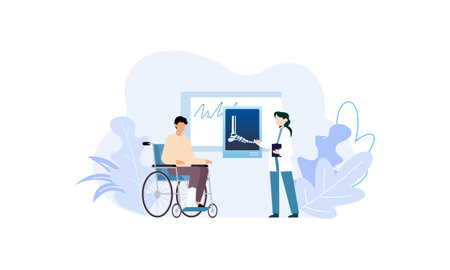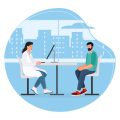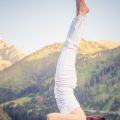Understanding Stroke Rehabilitation in the Indian Context
Stroke has emerged as a leading cause of disability among the elderly population in India. The incidence of stroke is on the rise, primarily due to an increase in life expectancy and changing lifestyles. Rehabilitation after a stroke is essential for regaining mobility, independence, and overall quality of life. However, the process of stroke rehabilitation in India is deeply influenced by unique socio-cultural norms and the current state of the healthcare system.
In many Indian families, elderly individuals are cared for within multigenerational homes, where family members play a significant role in daily support and decision-making. While this strong family support network is beneficial, it can also lead to dependence and may sometimes limit access to professional rehabilitation services. Furthermore, awareness about stroke recovery options remains low in rural areas, where traditional beliefs and social stigma may affect how rehabilitation is perceived and pursued.
Healthcare infrastructure in India varies greatly between urban and rural regions. In cities, there are specialized stroke units and rehabilitation centres, but these facilities are often inaccessible to those living in smaller towns or villages. Financial constraints also pose a major challenge, as many elderly patients rely on family income or pensions with limited coverage for long-term rehabilitation expenses.
The Indian context of stroke rehabilitation thus involves navigating cultural expectations, family dynamics, financial limitations, and variable healthcare resources. Understanding these factors is crucial when discussing effective strategies for improving outcomes for elderly stroke survivors across the country.
2. Key Challenges in Stroke Rehabilitation for Seniors
Stroke rehabilitation for the elderly in India faces a unique set of challenges, rooted deeply in both systemic and cultural aspects. Understanding these obstacles is essential to developing practical and sustainable solutions that work for Indian seniors and their families.
Limited Access to Therapy
The availability of specialized stroke rehabilitation centers is scarce, especially in rural areas. Many elderly patients have to travel long distances to access physiotherapy or occupational therapy services, which is often not feasible due to physical limitations or lack of transportation. Even in urban settings, the ratio of qualified therapists to patients remains low, leading to long waiting periods and inadequate follow-up care.
Financial Constraints
For most Indian families, out-of-pocket healthcare expenses can be overwhelming. Government schemes like Ayushman Bharat provide some relief, but coverage is often insufficient for prolonged rehabilitation. The table below highlights common financial challenges faced by families:
| Challenge | Description |
|---|---|
| High Cost of Therapy | Regular sessions are expensive for middle- and lower-income groups. |
| Lack of Insurance Coverage | Most health insurance plans do not cover extended rehab. |
| Loss of Income | Caretakers may need to take time off work, reducing household income. |
Awareness Gaps
There is a significant lack of awareness about stroke symptoms, the importance of early rehabilitation, and available resources. In many cases, families delay seeking professional help due to reliance on home remedies or misconceptions about recovery timelines. This delay can critically affect outcomes and quality of life for elderly stroke survivors.
Traditional Family Structures
Indian family systems are traditionally joint or extended, with the expectation that care will be provided within the home. While this can be a strength, it also poses challenges: family members may lack the training or time needed to provide effective rehabilitative support. Additionally, societal stigma around disability sometimes leads to isolation of the elderly within their own homes.
Summary Table: Major Obstacles in Elderly Stroke Rehabilitation (India)
| Obstacle | Impact on Rehabilitation |
|---|---|
| Poor Access to Facilities | Delays in starting therapy; inconsistent follow-up |
| Financial Barriers | Reduced frequency/intensity of rehab sessions |
| Lack of Awareness | Missed opportunities for early intervention |
| Cultural Expectations | Ineffective home-based care; social isolation |
Tackling these interconnected challenges requires community engagement, policy reform, and an approach that respects both clinical best practices and local realities.

3. Role of Family and Community in Recovery
In the Indian context, family and community play a pivotal role in the rehabilitation journey of elderly stroke survivors. The traditional joint family system, still prevalent in many parts of India, acts as a strong support network for the elderly. When an elder suffers a stroke, it is common for multiple generations living under one roof to share caregiving responsibilities. Family members assist with daily activities, medication management, and emotional support, which is crucial for holistic recovery. For example, daughters-in-law often take charge of preparing nutritious meals tailored to the patient’s dietary needs, while grandchildren provide companionship that boosts morale.
Moreover, caregivers within families are frequently guided by local healthcare workers such as Accredited Social Health Activists (ASHAs) or Anganwadi workers. These health workers bridge the gap between formal medical care and home-based rehabilitation by educating family members about exercises prescribed by physiotherapists and monitoring the patient’s progress during home visits.
Local community groups also contribute significantly to stroke rehabilitation. In many rural areas, self-help groups and senior citizen associations organize yoga sessions, laughter therapy clubs, or prayer meetings that encourage social interaction and physical movement. For instance, neighbourhood mohalla committees may coordinate group walks in the early morning or arrange for community health camps where elderly members can access basic physiotherapy services at minimal cost.
This collaborative approach reflects Indian values of seva (selfless service) and collective responsibility. It not only accelerates physical recovery but also addresses the psychological well-being of stroke survivors by minimizing feelings of isolation and helplessness. By harnessing the strength of family bonds and leveraging community resources, India creates a unique environment that supports elderly stroke patients on their road to independence.
4. Culturally-Appropriate Rehabilitation Strategies
Effective stroke rehabilitation for elderly individuals in India demands interventions that are not only evidence-based but also culturally tailored. Integrating Indian lifestyles, beliefs, and traditional practices into therapy increases adherence and optimises recovery outcomes. Below, we describe several key strategies widely accepted and practised within Indian communities.
Yoga-Based Interventions
Yoga, with its deep-rooted presence in Indian culture, serves as an accessible and holistic rehabilitation tool. Evidence suggests that gentle yoga postures (asanas), breathing techniques (pranayama), and meditation can significantly improve balance, mobility, and mental well-being among stroke survivors. Many physiotherapists now incorporate chair yoga or modified routines to suit individual capabilities, ensuring safety while respecting cultural preferences.
Physiotherapy Adapted to Indian Lifestyles
Physiotherapy remains the cornerstone of stroke rehabilitation; however, tailoring sessions to typical Indian environments—such as homes with limited space or joint families—yields better engagement. Therapists often focus on activities of daily living relevant to Indian households, including:
| Activity | Rehabilitation Focus |
|---|---|
| Sitting cross-legged (on the floor) | Lower limb strength & flexibility exercises |
| Using squat toilets | Squat training & balance improvement |
| Cooking in traditional kitchens | Fine motor skills & standing tolerance training |
Traditional Approaches & Community Support
Ayurveda and local healing traditions are often integrated into rehabilitation plans, particularly in rural areas. Oil massages (Abhyanga), herbal remedies, and dietary modifications are used to complement medical interventions. Family involvement is crucial: community-based rehabilitation models leverage support networks by training caregivers in basic exercise routines and regular monitoring.
Blending Modern and Traditional Methods
A collaborative approach between healthcare professionals and traditional healers fosters trust and compliance. Educational workshops using regional languages and relatable examples help demystify physiotherapy and modern rehabilitation tools, encouraging their adoption alongside time-honoured practices.
Summary Table: Examples of Culturally-Adapted Interventions
| Intervention | Description |
|---|---|
| Yoga Therapy | Simplified asanas for mobility; pranayama for respiratory health; meditation for mental resilience |
| ADL Training | Practising daily tasks (e.g., dressing in sarees/dhotis) to regain independence |
| Family Engagement | Involving relatives in supervised home-based exercises and progress tracking |
Culturally-appropriate rehabilitation maximises the relevance and impact of interventions, promoting recovery while respecting India’s unique social fabric.
5. Practical Solutions: Enhancing Accessibility and Affordability
Mobile Rehabilitation Units: Bringing Care to the Doorstep
For many elderly stroke survivors in India, especially those residing in remote villages or semi-urban areas, reaching a rehabilitation centre is a significant challenge. Mobile rehab units offer a practical solution by bringing physiotherapists, occupational therapists, and basic equipment directly to the patients home. These mobile clinics can regularly visit different communities on a scheduled basis, ensuring timely intervention and continuity of care. Such initiatives not only reduce travel expenses but also make the elderly feel more comfortable and secure in familiar surroundings.
Empowering Local Health Workers: Leveraging ASHAs and Community Support
The Accredited Social Health Activists (ASHAs) have been the backbone of Indias rural healthcare system. By equipping ASHAs with foundational stroke rehabilitation knowledge and simple exercise protocols, they can assist stroke survivors with daily therapeutic routines, monitor progress, and identify warning signs for complications. Regular training workshops for ASHAs and Anganwadi workers on post-stroke care can bridge the gap between professional therapists and grassroots needs. Engaging local self-help groups and Panchayats can further encourage community involvement and support for affected families.
Harnessing Telemedicine: Bridging Urban-Rural Healthcare Divide
With the rapid digitalisation of India’s healthcare sector, telemedicine platforms are increasingly accessible even in tier-2 and tier-3 towns. By connecting elderly patients with expert rehabilitation specialists via video consultations, families save time and money while still receiving personalised guidance. Simple smartphone-based apps or WhatsApp video calls allow therapists to demonstrate exercises, correct techniques, and track improvements remotely. Government schemes such as Ayushman Bharat can be leveraged to subsidise digital devices or internet access for low-income households, ensuring that even the most underprivileged elders benefit from modern rehabilitation methods.
Action Points for Implementation
- State governments should collaborate with NGOs to deploy more mobile rehab vans across districts with high stroke incidence rates.
- Regular capacity-building sessions for ASHAs should include modules on stroke recovery, prevention of falls, and home modification tips.
- Tele-rehabilitation hubs at district hospitals can act as nodal points to guide smaller health centres through virtual case discussions.
Culturally Relevant Outreach
Adapting educational materials into regional languages like Hindi, Tamil, Bengali, or Marathi ensures that elderly patients and caregivers understand rehabilitation instructions clearly. Community radio broadcasts, temple announcements, or local WhatsApp groups can spread awareness about available services. By blending technology with trusted local networks, India can make stroke rehabilitation both accessible and affordable for its senior citizens.
6. Case Studies and Success Stories from Across India
Transforming Lives: Real-world Examples
To truly understand the impact of culturally-sensitive stroke rehabilitation in India, let us look at a few inspiring stories from across the nation. These case studies highlight how traditional values, family support, and community resources play a pivotal role in the journey of elderly stroke survivors.
Kavita’s Recovery Journey in Pune
Kavita Bai, a 68-year-old retired schoolteacher from Pune, suffered a left-sided stroke. Her family initially struggled to access quality rehabilitation due to financial constraints and language barriers. However, with the help of a local NGO providing Hindi-speaking therapists and home-based physiotherapy sessions, Kavita regained mobility in her right hand within six months. The therapy team incorporated yoga and familiar household activities into her daily exercises, making her rehabilitation both effective and culturally relevant. Today, Kavita inspires other women in her neighbourhood by sharing her progress and leading group exercise sessions.
Community Support in Rural Tamil Nadu
Mr. Ramaswamy, aged 72 from a village near Madurai, faced immense challenges after his stroke due to limited transportation and awareness about rehabilitation services. Local health workers, trained under a government outreach program, began weekly visits to his home. They taught his family basic physiotherapy techniques using locally available tools like bamboo sticks and traditional massage oils. With the community’s encouragement, Ramaswamy gradually recovered his ability to walk short distances with support. His case demonstrates the power of integrating indigenous practices with modern rehab techniques for accessible care.
Leveraging Technology in Urban Delhi
Mrs. Shanti Gupta, 70 years old from Delhi, benefited from telerehabilitation during the COVID-19 lockdowns. Using her son’s smartphone and WhatsApp video calls, she connected with physiotherapists who guided her through customized exercise routines in Hindi and Punjabi. Digital platforms enabled Shanti to continue her progress without interruption while remaining close to her family support system. Her story showcases how technology bridges gaps in urban healthcare delivery, especially for elderly patients who may have mobility limitations or fear of hospital visits.
Culturally-Rooted Solutions Lead to Lasting Impact
These cases underline that when stroke rehabilitation pathways are adapted to suit India’s diverse languages, traditions, and familial structures, elderly survivors not only regain function but also experience renewed confidence and social participation. By drawing on local resources—be it yoga, Ayurveda-inspired massages, or community health workers—India is developing a holistic approach to stroke recovery that respects both medical needs and cultural context.
7. The Road Ahead: Building a Robust Support System
As India’s elderly population continues to grow, the need for an effective and accessible stroke rehabilitation system becomes increasingly urgent. While families play a crucial role in caregiving, sustainable recovery requires coordinated efforts at multiple levels. Here are key recommendations for government bodies, NGOs, and healthcare professionals to create a more robust support system for senior citizens recovering from stroke:
Government Initiatives: Strengthening Policy & Infrastructure
The government must prioritize geriatric stroke rehab within national health policies. Increased budget allocations are needed to upgrade district hospitals with dedicated physiotherapy units and occupational therapy facilities. Launching public awareness campaigns in regional languages can help reduce stigma and encourage timely medical intervention. Schemes like Ayushman Bharat should explicitly cover long-term rehab services, making them affordable for families across economic strata.
NGOs: Bridging Gaps & Empowering Communities
Non-governmental organizations can be pivotal in bridging gaps where government reach is limited. By training community health workers and volunteers in basic stroke care and home-based exercises, NGOs can extend rehabilitation into rural and semi-urban areas. Mobile rehab vans, community workshops, and self-help groups can make support accessible even in remote villages. Collaboration with local panchayats ensures that culturally relevant solutions are adopted.
Healthcare Professionals: Capacity Building & Holistic Care
Doctors, physiotherapists, speech therapists, and occupational therapists must adopt a team-based approach for comprehensive recovery plans tailored to Indian seniors. Regular upskilling workshops on evidence-based practices, cultural sensitivity, and use of low-cost assistive devices will optimize outcomes. Additionally, involving caregivers in therapy sessions empowers families and reinforces continuity of care at home.
Promoting Innovation & Research
Investing in research focused on Indian demographics—considering dietary habits, living environments, and socio-cultural factors—can lead to context-specific rehabilitation protocols. Encouraging innovation in affordable assistive technology, digital rehab platforms, and telemedicine will further bridge urban-rural divides.
Towards an Inclusive Future
A future-ready stroke rehabilitation ecosystem in India calls for collective action. By integrating policy reforms, community empowerment, professional capacity building, and technological innovation, we can ensure that every elderly stroke survivor—regardless of their background—has access to the resources they need for a dignified recovery.


